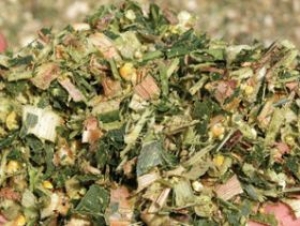Dairy farming

The adverse weather conditions have meant lower quality grass silage. It has also been one of the poorest cereals harvests on record and maize silage is unlikely to save the day.
Some maize crops have failed completely, with most expected to be at 50 to 75 per cent of normal yields.
On top of this protein prices have been astronomically high. Soya is over the £420 per tonne mark, with wheat over £180 per tonne.
James Husband, from Evidence Based Veterinary Consultancy and a member of the European Board of Bovine Experts, said that some producers may consider cutting back concentrate use due to the costs.
This, however, is not the best option, he said. Instead, he advises producers to continue feeding cows to keep milk yields and margins up.
To cut back costs, Mr Husband suggested that producers look to ration based on amino acids and cut back on crude protein, aiming for 16 per cent rather than 18 per cent.
Another suggestion might be to increase urea in the diet to make available more soluble protein, which would allow some crude protein to be replaced.
Mr Husband said that this year would be a tricky year for producers, as many would see milk yields drop, despite a higher feed rate.
As well as a lack of decent forage, producers are also going to need to look for starch sources, due to a poor maize crop.
Alternative sources of starch could be found from wholecrop wheat, waste products such as breakfast cereal or maize grains. While maize grains are not commonly used in the UK, Mr Husband said that they are starting to look more attractive on a pence per MJ basis.
Mr Husband also suggested potatoes as an alternative, with 80 per cent starch and 50 per cent dry matter content.
With poor quality feed and wet weather, Mr Husband said that producers should look out for signs of mycotoxins in feed and acidosis in cows.























